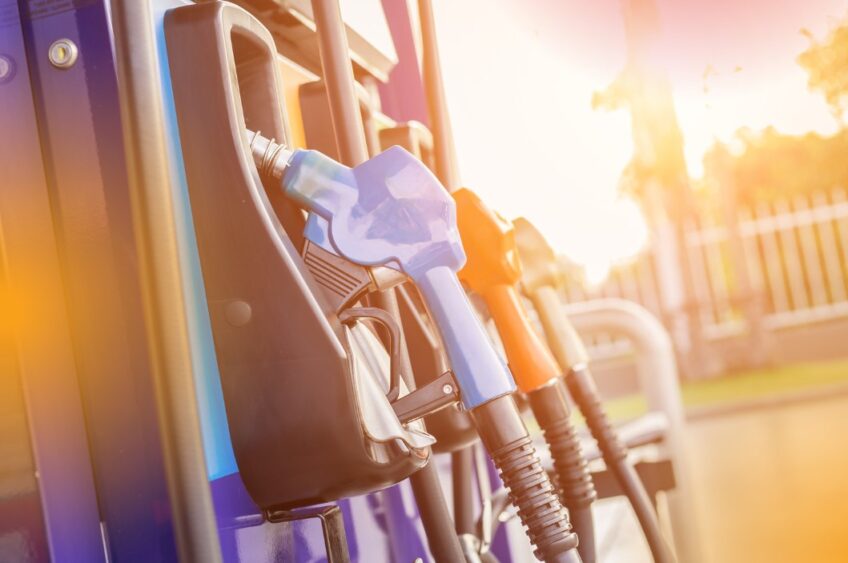Diesel fuel is an essential resource for powering a wide range of vehicles and equipment. However, not all diesel fuel is created equal. On-road and off-road diesel fuel are two distinct varieties with their own unique properties and use.
Understanding the differences between these types of diesel fuel can help you make informed decisions when it comes to fueling your vehicles and equipment. In this article, we will explore the key differences between on-road and off-road diesel fuel and help you determine which type is right for your needs.
On-Road Diesel Fuel
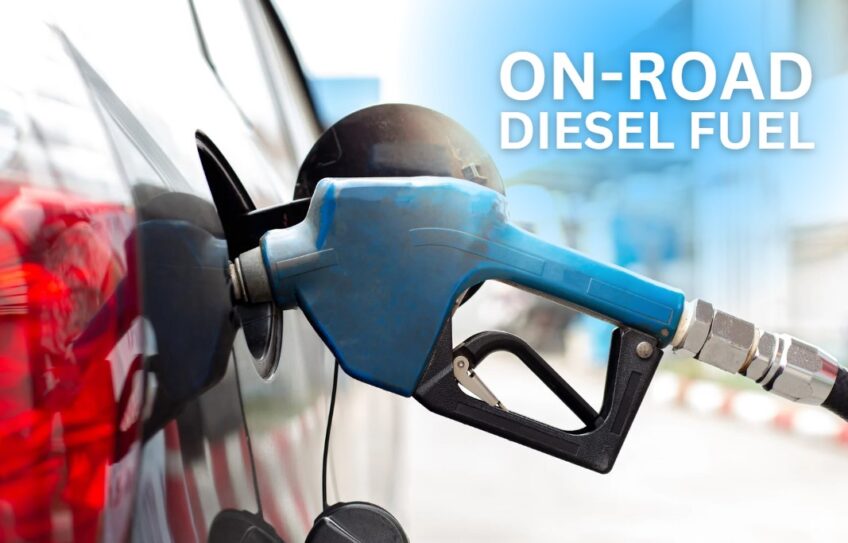
This is a common fuel used worldwide, in diesel-powered vehicles. It differs from off-road fuel. Here, we’ll look into the requirements for each type of diesel fuel, and their properties.
This fuel has more regulations and requirements than off-road diesel fuel.
The Different Grades
It is classified into distinct grades depending on its cetane rating and sulfur content. These grades assist the consumers in selecting the fuel that works best for their engine.
The three grades of on-road diesel fuel are;
- Ultra Low Sulfur Diesel (ULSD): This grade has a maximum sulfur level of 15 ppm. It’s formulated to reduce emissions from diesel engines.
- Low Sulfur Diesel (LSD): This grade has a maximum sulfur content of 500 ppm and is applicable to older diesel engines.
- Renewable Diesel: This grade is made from renewable sources such as agricultural by-products, fats, and vegetable oils.
Knowing their grades helps you make informed decisions for your engine and the environment.
How On-Road Diesel Fuel is Refined
It is processed from crude oil. It is heated in a distillation column. This causes it to divide into different parts depending on their molecular weight. The lighter bits, such as diesel and gasoline, are collected on top.
Next, it is sent for hydro treatment. It is mixed with hydrogen and passed through catalysts at high temperatures and pressure. The hydrogen reacts with sulfur and nitrogen in the diesel, removing any impurities and creating a cleaner fuel.
After hydro treatment, it is further refined with filtration and polishing to take away any extra impurities.
The result is a high-quality, low-emissions fuel ideal for use in on-road vehicles.
The Benefits and Drawbacks
Benefits: It gives better fuel efficiency and longer engine life. It’s cost-effective for long-distance travel.
Drawbacks: It contributes to air pollution and greenhouse gas emissions. It’s also subject to taxes and regulations, making it more expensive than regular gasoline.
Off-Road Diesel Fuel
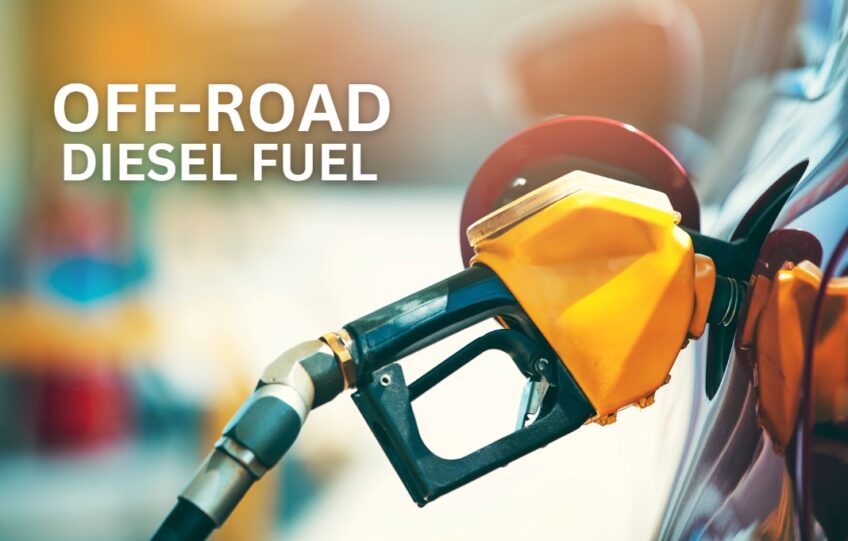
This petrol is a special kind of fuel used for vehicles not allowed on public roads. It has less sulfur and higher cetane compared to the on-road type. It also has a different composition, making it perfect for farming, construction, and marine operations.
Let’s explore the differences between on-road and off-road diesel fuel. Plus, know the benefits of off-road fuel and where you can buy it.
What is Off-Road Diesel Fuel Used For?
It is also called dyed petrol. It’s used in vehicles and heavy equipment not running on public roads. Unlike on-road diesel, it’s not taxed and is cheaper.
It’s mainly used in industries like construction, agriculture, and mining. Tractors, excavators, generators, and pumps require off-road petrol.
The Different Grades
It is available in three grades. High sulfur, low sulfur, and ultra-low sulfur.
High Sulfur: This is the oldest and lowest quality. It was used for vehicles until recently. It has high sulfur content. Burning produces sulfur dioxide, which pollutes the air.
Low Sulfur: This grade has 500 parts per million (ppm) of sulfur max. It was introduced in 2006 and is used for off-road vehicles like farming and construction equipment. Low-sulfur petrol produces 90% fewer emissions than high-sulfur petrol.
Ultra Low Sulfur: 15 ppm max sulfur content. It was released in 2010 and is now the standard for diesel petrol. It is less harmful, more efficient, and better for the environment than high-sulfur diesel.
Differences Between On-Road and Off-Road Diesel Fuel
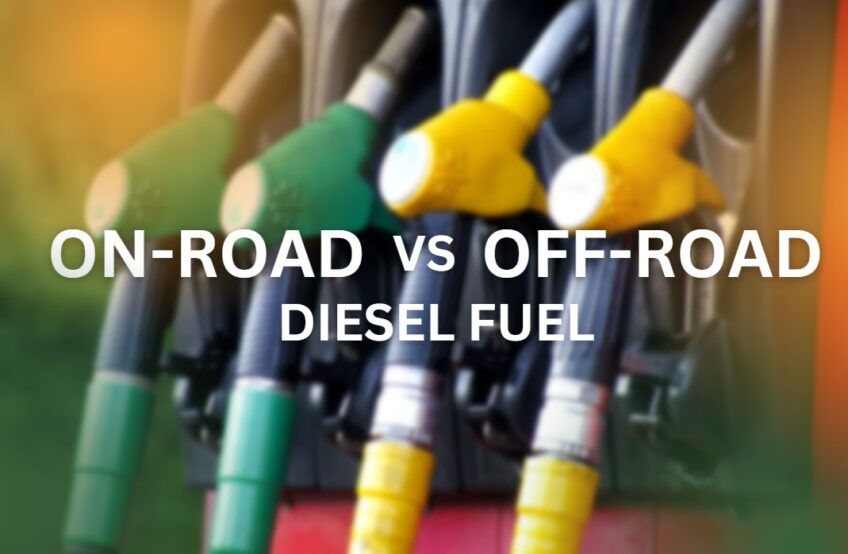
They both have their advantages. On-road petrol is typically used for vehicles on public roads, like highways. Meanwhile, off-road petrol is mostly used for vehicles in private areas like farms, ranches, and industrial sites.
In this section, let’s discover the differences between them.
Tax Differences
Taxes on on-road petrol are higher than on off-road ones. This is because vehicles that use public highways contribute to road wear and tear. Off-road petrol is used for activities such as construction, farming, and industrial activities. Therefore, it is taxed at a lower rate.
Using off-road petrol in highway vehicles is illegal and can result in hefty fines. So, it is important to use the right type and pay the correct taxes.
Sulfur Content Differences
They are different due to their sulfur content. On-road petrol has a lower sulfur content, as regulated by the EPA, at 15 ppm. Off-road petrol, on the other hand, has a maximum of 500 ppm sulfur, since it’s used in types of machinery such as tractors, generators, and construction equipment.
This higher sulfur content leads to more emissions. But, it also provides better lubrication than low-sulfur on-road diesel fuel. This means using off-road petrol in on-road vehicles can result in more wear and higher maintenance costs.
So, it’s important to select the right type of petrol depending on your vehicle or equipment needs and to follow all regulations to reduce environmental impact.
Legal Differences
They have similar components and properties. Nevertheless, there are substantial legal distinctions between them. Mainly, these differences relate to their taxation and environmental regulations.
Taxation: On-road type is taxed by both state and federal governments. It supports infrastructural and upkeep expenses. Off-road type is not taxed as it is used for agricultural, construction, and industrial objectives.
Dye: Off-road diesel fuel has a red dye. This shows it is not taxed. Also, it prevents its use on-road, which is forbidden.
Sulfur content: On-road type must follow strict sulfur content regulations to decrease emissions and enhance air quality. Off-road type does not have the same regulations and may have higher sulfur levels.
Consequently, on-road petrol is pricier and its use is more tightly regulated.
Finding a Fueling Station for Off-Road Diesel Fuel
Locating it can be a hassle, especially in remote or unknown areas. But, there are certain ways and resources to find a trustworthy and nearby fueling station.
Google “off-road diesel fuel near me” or use GasBuddy or Fleetio to locate one. Check the National Association of Convenience Stores (NACS) or the National Association of Truck Stop Owners (NATSO) for stations that offer this fuel.
Contact local fuel distributors, agriculture cooperatives, or construction companies to see if they offer off-road diesel to customers. Some states have fuel tax exemption programs for off-road petrol. Look into if your state has this, and what the requirements are.
You can use these resources and strategies to find a fueling station for your needs and keep your equipment running smoothly.
Delivery Options
Delivery options for on-road and off-road petrol include;
- Tank Wagon Delivery – tanker truck for larger amounts.
- Bobtail Delivery – smaller tanker truck for less fuel.
- Transport Delivery – bulk to a storage facility for storing large amounts.
- Cardlock Delivery – self serve fueling 24/7 with a fuel card.
Choose the option that fits your needs best. Each has its own pros and cons.
Choosing a Diesel Fuel and Maintaining Your Engine

Diesel fuel comes in two types: on-road and off-road. On-road is for highway vehicles and off-road is for vehicles used off the pavement. Each has pros and cons, so it’s important to understand which works best for your vehicle.
Maintaining Your Engine to Maximize Diesel Fuel Efficiency
Maximizing efficiency and saving money can be done with regular vehicle engine maintenance. Here are some tips:
Change the air filter. A clogged filter reduces airflow, lowering fuel efficiency. Replacing it at recommended intervals can improve efficiency by 10%.
Use the right petrol. Varied energy densities in diesel petrol can make a difference in efficiency. Look for high-quality fuels from reliable sources.
Check tire pressure. Underinflated tires drag on the engine, decreasing petrol efficiency. Keeping the correct tire pressure can help improve fuel economy.
Regular engine maintenance. Oil changes, tune-ups, and general maintenance can ensure your engine is running efficiently and avoiding costly repairs. Properly maintained engines can improve petrol efficiency by 40%.
Diesel Fuel Additives and Their Benefits
Diesel fuel additives are special chemicals that get added to your fuel. These provide many advantages for your engine. Here is what you get:
- Lubrication: Additives give extra lubrication and protect your engine from wear, saving costs and boosting performance.
- Efficiency: They make your fuel burn better, giving you more miles per gallon and slicing your expenses.
- Fewer Emissions: Combustion gets improved, reducing the emissions from your engine.
- Cold Weather Protection: Fuel gelling in colder temperatures is prevented.
- Longer Life: Fuel stability and longevity are extended.
Using the right diesel fuel additive and maintaining your engine with it provides great benefits – better performance and lower costs.
Safety and Storage of Diesel Fuel
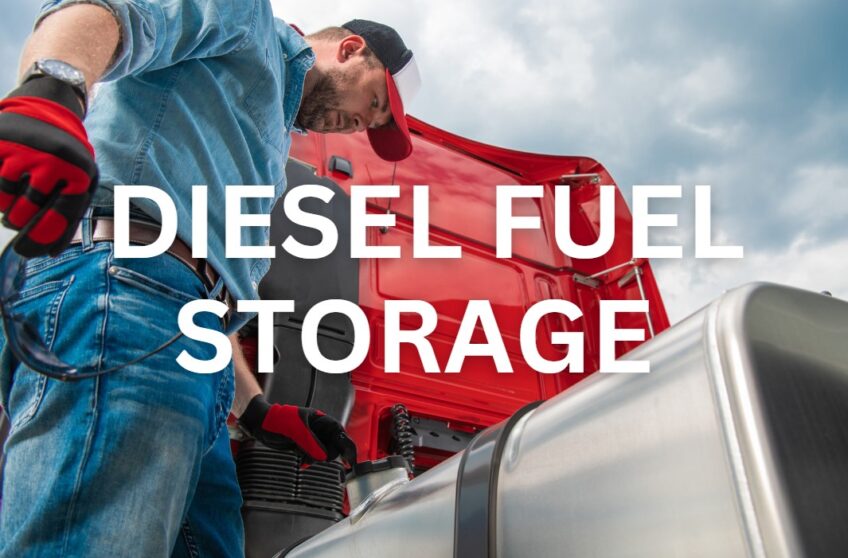
Using and storing diesel fuel safely is essential. Store it in a secure container and in a ventilated area. Wear safety gear when handling diesel fuel.
For your safety and compliance, let’s look at the safety and storage features of diesel fuel.
Best Practices for Storing Diesel Fuel
It is important to store it securely to avoid fires and harm to your equipment. Here are some tips to remember:
- Store it in a well-ventilated place far from heat sources and ignition points.
- Use suitable containers of metal or HDPE plastic for keeping diesel fuel. Do not store fuel in containers made of materials that may react with diesel, like aluminum.
- Label your diesel storage containers with important info like fuel type, purchase date, and quantity.
- Treat diesel fuel with a biocide before storing it to prevent microbial growth and contaminants that may damage your engine.
- Keep your diesel fuel storage area neat and dry. Inspect it regularly for signs of leaks or damage.
- Use the oldest fuel first and rotate the storage every six months. This will ensure the freshness of fuel and extend the life of an engine while removing the risk of microbial contamination.
Follow these tips to store diesel fuel safely and maintain your equipment’s optimal performance for years.
Safety Tips for Handling Diesel Fuel
Diesel fuel is used for vehicles and equipment in many industries like transportation, construction, and farming. But it can be hazardous if not dealt with right. Here are some safety tips for handling diesel fuel:
- Wear protective gear such as gloves and eye protection.
- Store it in special, approved containers.
- Keep away from heat sources, and open flames, and put in a properly ventilated spot.
- Don’t smoke or use electronic devices near diesel fuel, as it’s flammable.
- In case of spills, use spill kits to clean and dispose of them properly.
Diesel Fuel and Environmental Concerns
To keep safe, you need to know the right safety and storage steps. Here’s the ultimate guide!
Safety: Diesel is flammable. Store it in special containers. Away from heat and sun. Clean up any spills immediately. Dispose of them correctly.
Storage: It lasts 6 months to a year. Store it in a dry, cool place. Away from sun and moisture. Label all containers. Include the date and type of fuel.
FAQs
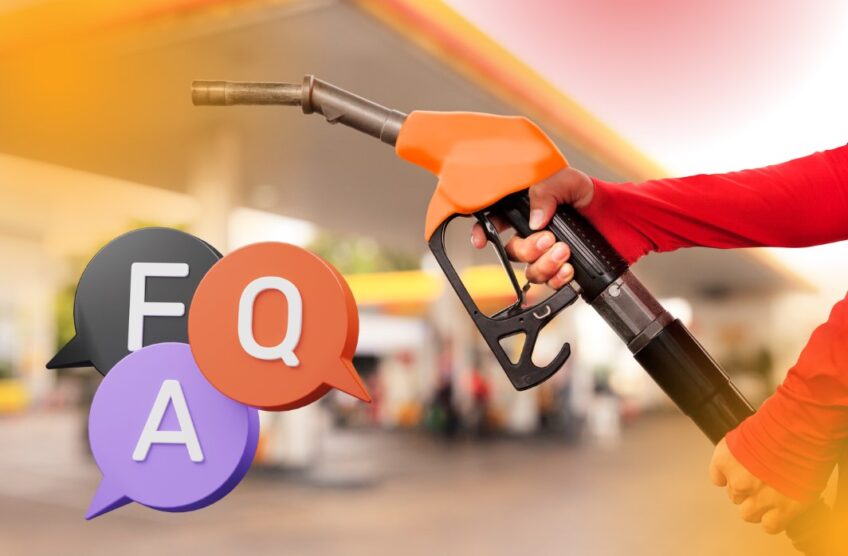
What are the environmental impacts of on-road and off-road diesel fuel?
Both of them can have negative environmental impacts due to their emissions, but on-road fuel is subject to stricter emissions regulations and may be cleaner-burning as a result.
How is on-road diesel fuel used?
It is primarily used to power highway vehicles, such as cars, trucks, and buses.
How is off-road diesel fuel used?
It is primarily used to power non-highway equipment, such as construction equipment and generators.
How can you tell the difference between on-road and off-road diesel fuel?
Off-road type of fuel is typically dyed red to indicate that it is tax-exempt and not to be used in on-road vehicles. However, it is important to always check with the fuel provider to ensure that you are purchasing the correct type of fuel.
Can you switch between on-road and off-road diesel fuel in the same vehicle or piece of equipment?
No, it is illegal to switch between them in the same vehicle or piece of equipment. Each type of fuel is formulated for specific uses and switching between them can have negative environmental impacts and may result in penalties or fines.
Conclusion
In conclusion, the differences between on-road and off-road diesel fuel go beyond just their tax purposes. On-road diesel is formulated for use in highway vehicles, while off-road diesel is designed for use in non-highway equipment.
Understanding these differences is crucial for ensuring that you are using the correct type of diesel fuel for your needs, whether it’s for powering your car or operating heavy machinery. By knowing the key differences between on-road and off-road diesel, you can make informed decisions and help ensure that your vehicles and equipment run smoothly and efficiently.

